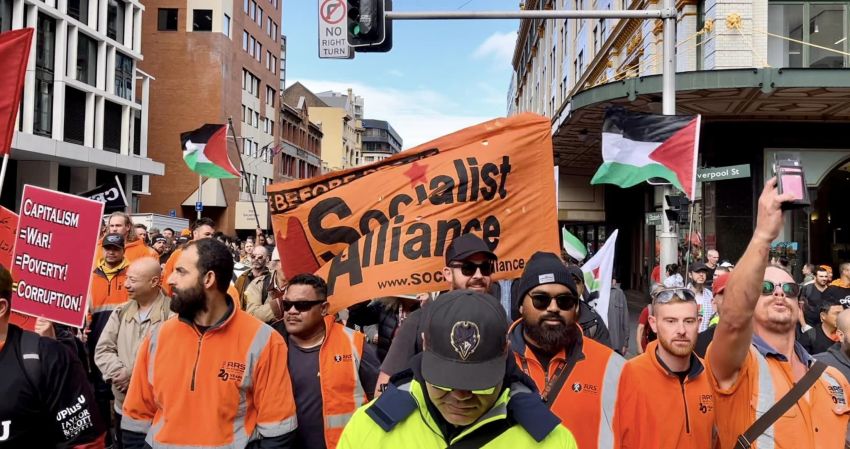
Federal budgets are about choices about where public money should be spent. Instead, governments cynically use them to manipulate public fears and expectations.
In the days and weeks leading up to May 14, leaks about economic data and “new” measures are drip fed to the media, to sell a familiar message that the government will try its best to ease our pain and concerns, while remaining “economically responsible”.
The latest budget is no different, except Labor has to go to a federal election by September 27 next year.
Whether Labor or the Coalition, we get the same basic budget soft sell — an attempt to placate us while offering “choices” that fundamentally serve the corporate rich.
Anthony Albanese’s Labor government has proved itself to be a loyal economic manager for the capitalist ruling class.
Last year’s budget forecast a $4 billion surplus for 2022–23, but it actually turned out to be $22 billion!
The 2024 budget is also predicted to be flush, with $25 billion more than what was predicted in the last budget for the five years to 2027.
This surplus comes mostly from rising tax revenues from high commodity prices (especially iron ore and other minerals exported to China).
Bracket creep, which will quickly erode the token tax cuts that ordinary workers will get from the amended Stage 3 tax cuts that come in from July 1, also added to government revenue.
The only lasting tax cuts are for the rich already in the highest tax bracket!
The government would have had even more revenue if it did not let the multinational gas corporations get away with paying ridiculously low taxes through the shonky Petroleum Resources Tax (PRT).
The PRT brings in less and less income, even as gas companies are cashing in on the wars in Ukraine and Palestine to make super-profits, as Greg Jericho from The Australian Institute (TAI) reported.
The volume of Australia’s liquefied natural gas exports has risen seven-fold since 2006. But the total tax paid on every $100 of revenue by gas corporations has been reduced more than four-fold, to less than than collected in a year in HECS/HELP student debts.
One pre-budget leak is the supposed $3 billion reduction of the $74 billion owed in student debts, by rejigging the way they are indexed.
This won’t wipe student debt, but only offset some of last year’s massive 7.1% rise. Last June, workers with student debts, already struggling with record rents or home mortgage repayments, received a big slug.
Real median wages are still lower than 12 years ago because employers, with the backing of the Reserve Bank of Australia and Coalition and Labor governments, have forced wage restraint even while profits have been well above the historical average.
Last year’s shock rise in student debt was based on the official inflation rate, which has since dropped to 3.6%.
However, the actual cost of living for workers rose by 6.5% over the same period.
While the employed have suffered, those without jobs have suffered even more, since the JobSeeker payment is well below the poverty line. It is currently at just 70% of the Age Pension — which is only just above the poverty line for those who own their home.
The Australian Council of Social Services wants JobSeeker to be raised to 90% of the Age Pension, a measure that TAI estimates would cost $4.6 billion.
This is dwarfed by the $12.7 billion the richest 10% of the population gain each year from capital gains tax discounts, the $8.6 billion they gain from superannuation tax concessions and the more than $13 billion they gain from negative gearing.
Raising JobSeeker will also make a big contribution to addressing the family and domestic violence epidemic facing women, according to a May 6 open letter by 200 women leaders.
It would lift go some way way to lift about half a million women out of poverty, giving them the means to leave violent partners.
While Labor has promised more funding in the budget for women facing family and domestic violence, the measures already announced are totally inadequate.
Meanwhile, Labor has committed to even more military spending, as it enmeshes Australia even more into the United States-led war drive against China, ironically the source of Australia's revenue boom.
Military spending is to rise from just under 2% to 2.4% of gross domestic product by 2032–33, even before the payments for the $368 billion AUKUS nuclear-powered submarine deal begin.
This is a grossly irresponsible misspend given the unprecedented climate, cost-of-living and housing crises.
If you agree the government should act for the people, instead of protecting the interests of the corporate rich, please become a Green Left supporter or help us meet our $200,000 Fighting Fund.